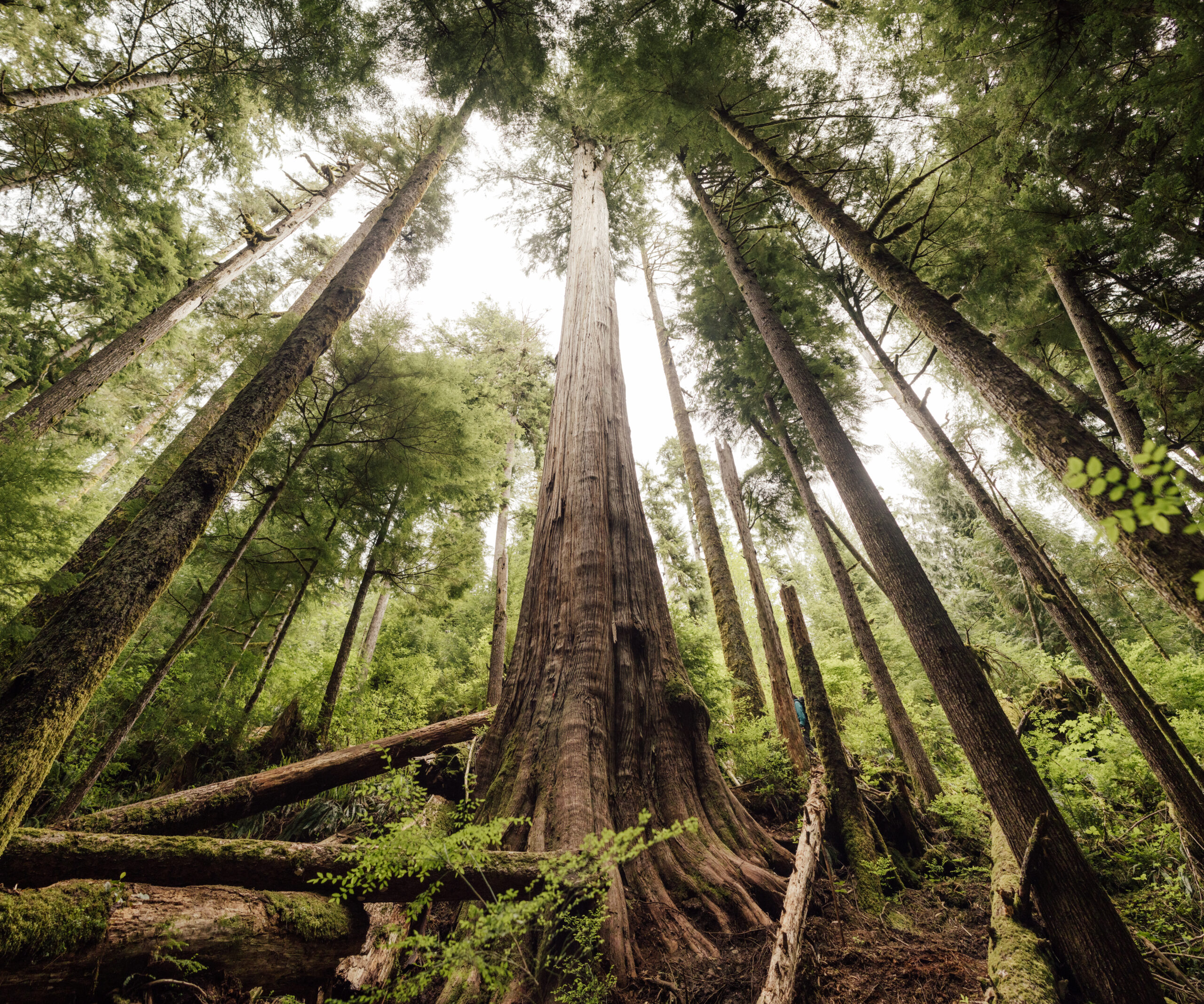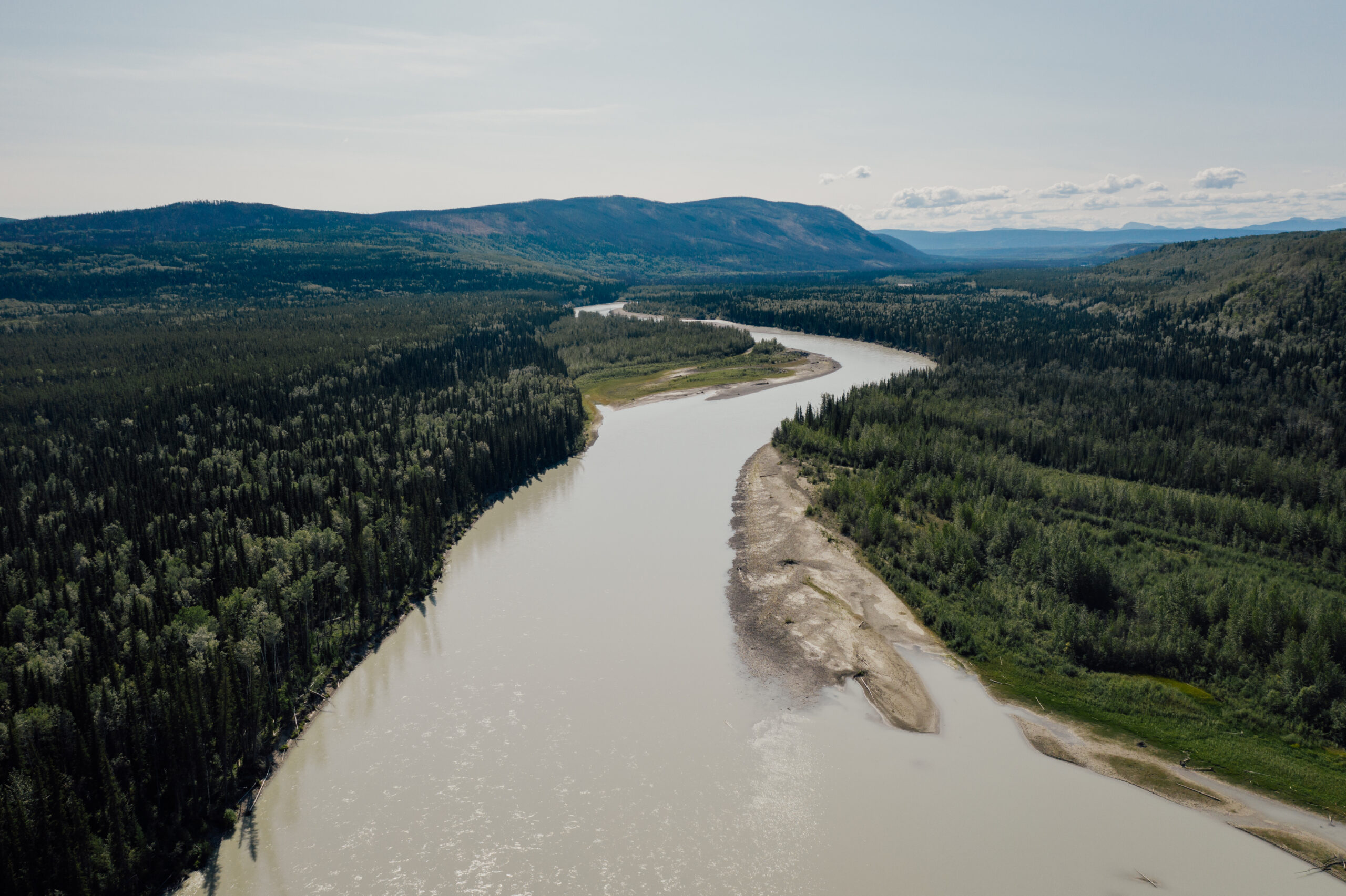
The Narwhal’s in-depth environmental reporting earns 11 national award nominations
From disappearing ice roads to reappearing buffalo, our stories explained the wonder and challenges of...
As economically devastating tariffs threatened by U.S. President Donald Trump loom, B.C. Premier David Eby has directed his cabinet to prioritize economic development and make it easier for corporate interests to feel confident investing in the province.
Eby’s new mandate letters for cabinet focus heavily on finding ways to support B.C.’s industries — including forestry, mining and oil and gas development — by speeding up permitting processes and reducing regulatory burdens, spurring concerns from conservation groups that environmental initiatives and protections could be sidelined.
“There were virtually no environmental directions in the letters that weren’t qualified by industry interests or by economic considerations,” Jessica Clogg, the executive director and senior counsel at West Coast Environmental Law, said in an interview.
“The most extreme interpretation is it’s a whole-scale abdication of the values and direction that we thought this government stood for,” she said.

The NDP government’s focus on boosting economic growth and easing the permitting process is explicit in Environment and Parks Minister Tamara Davidson’s mandate letter, which directs her to have the B.C. Environmental Assessment Office “develop specific measures that will expedite authorizations and permitting for major projects,” with input from other ministries with permitting authority, including the forestry and mining ministries.
Davidson’s mandate letter also makes it clear Eby is keen to eliminate environmental assessment requirements for certain projects: it directs Davidson to get rid of assessments in cases where the process “is duplicative, delays projects with environmental advantages or offers only limited value while impeding projects that will benefit the province as a whole.”
Davidson is responsible for executing the government’s plan, announced in December, to exempt new wind power projects from environmental assessments. The wind power exemption was followed by Eby’s announcement last week that the North Coast transmission line — which will deliver power for the liquefied natural gas (LNG), mining and other industries — will not be subject to an environmental assessment. The project will instead receive permits and authorizations from the BC Energy Regulator, which is largely funded by the oil and gas industry.
“Proposed measures such as exempting whole classes of projects from environmental assessment or arbitrarily limiting timeframes for permitting are nothing but a recipe for conflict and uncertainty,” Clogg said in a statement.
Meanwhile, Energy Minister Adrian Dix’s mandate letter directs him to find ways to “dramatically accelerate” permitting for clear and low-carbon energy projects while maintaining “world-leading environmental standards.”
Sarah Korpan, government relations manager for the environmental law charity Ecojustice, said the new mandates signal “the environment is nothing more than an afterthought” for the NDP government. “They fail to carry forward even the bare minimum of previous commitments related to the prioritization of biodiversity and ecosystems,” she said in a statement.
The Canadian Parks and Wilderness Society, Sierra Club BC and Wilderness Committee also issued statements expressing alarm about the lack of environmental urgency in the mandate letters.
“These aren’t just gaps in the mandate letters — this is a deliberate and near-total exclusion of any commitments to biodiversity and species-at-risk protection,” Wilderness Committee conservation and policy campaigner Lucero Gonzalez said in a press release. “Despite what Premier David Eby seems to believe, B.C. is not immune to the biodiversity crisis, and prioritizing logging, mining and oil and gas corporations over ecosystems amidst an extinction crisis isn’t just negligence — it’s an environmental and moral failure.”

In an emailed statement a government spokesperson said the NDP’s commitments to protecting old-growth forests and 30 per cent of the province’s land and water by 2030 remain intact.
“Our government’s inclusive land use planning process will not only provide greater certainty about what areas of the province need to be protected, but also clearly identify those areas where resource development and industrial activity can occur,” the statement said.
“Choosing between the economy and protecting the environment is a ‘false choice,’ ” the statement continued. “We can and we must do both.”
In his mandate letters, Eby said B.C. is facing a “profoundly challenging geopolitical environment.”
“Close friends and neighbours to our south are contemplating imposing draconian tariffs on our products that would hurt both Americans and Canadians,” he wrote. “Global inflation, snarled supply chains and war are threatening global economic growth and prosperity as well as the transition to a low-carbon economy.”
The premier gave comparatively little attention to the marquee initiatives his government was working on prior to last October’s election to address declining wildlife populations, protect remaining old-growth forests and conserve nature in the face of a deepening global biodiversity crisis.
Eby’s letter to new Forests Minister Ravi Parmar, for instance, is a stark departure from the letter issued to Parmar’s predecessor one year ago. The 2024 mandate letter to former forests minister Bruce Ralston mentioned old-growth forest protections multiple times and directed Ralston to work with the minister of Water, Land and Resource Stewardship to speed up implementation of recommendations made in a strategic review, including the immediate deferral from logging of old-growth forest at the greatest risk of biodiversity loss.
But Parmar’s letter mentions old-growth forests only once.

Eby directs Parmar to fulfill the NDP government’s “commitment to protect old growth,” while ensuring 45 million cubic metres of timber are available for harvest each year, roughly the same amount available today.
The government spokesperson noted work to implement old-growth forest commitments has begun.
“It is critical that we continue taking action, with the understanding that the scope of work to fulfill all the recommendations will take place in the years ahead,” the statement said.
Only two of the 2020 review’s 14 recommendations — “engage the full involvement of Indigenous leaders and organizations” and “defer development in old forests at high risk, until a new strategy is implemented” — were at an advanced stage of implementation, according to a government update published in May 2024. Nearly half the recommendations were still in an “initial action” stage.
Eby also directed new Water, Land and Resource Stewardship Minister Randene Neill to balance conservation measures with economic diversification that supports the technology, tourism and resource development industries. Neill’s mandate letter doesn’t mention biodiversity, the old-growth strategic review or B.C.’s wildlife protection strategy, called “Together for Wildlife.” The only reference the letter makes to B.C.’s commitment to conserve 30 per cent of land by 2030 comes alongside a directive to enable mine exploration and development in the province’s northwest in partnership with First Nations.
“The commitment, in theory, is there to 30-by-30, but there’s nothing in the mandate letters that gives me confidence that we’re going to be moving with any speed towards that goal,” Clogg said.
According to the government spokesperson, B.C.has established 13 conservancies and two provincial parks since August 2017.
“The B.C. government remains committed to protecting 30 per cent of land and water by 2030,” the spokesperson said. “Expanding our parks and protected areas secures the rich biodiversity B.C. is known for and ensures these special places will be here for future generations.”
Gillian Staveley, the director of culture and land stewardship at the Dena Kayeh Institute, which is working to establish a Kaska Dena Indigenous protected area called Dene K’éh Kusān in northern B.C., said she’s “cautiously optimistic” after reading through the mandate letters.
“We know that a lot of nations, a lot of British Columbians want to see more land protected in the province, and they also want to address that pressing need for critical minerals, especially in these urgent and challenging times,” Staveley said in an interview. “I truly believe you can achieve both, but it’s going to take cooperation and partnership and willingness for us to seek that balance together.”

Staveley said she believes the mandate letters show Eby remains committed to the 30-by-30 conservation target and she’s confident there’s a path forward for the Dene K’éh Kusān protected area.
“We know that it’s going to take initiatives like ours, like the Kaska [Indigenous Protected and Conserved Area] for B.C. to achieve that goal,” she said “We know that they’re going to need to work with us and we’re sitting here with open arms, ready to get to work and make that a reality.”
In the meantime, Staveley said she and her team at the Dena Kayeh Institute are continuing to engage the public more broadly to increase understanding of Indigenous Protected and Conserved Areas.
Dene K’éh Kusān would protect 40,000 square kilometres in Kaska Dena territory, safeguarding a largely intact expanse of land that’s home to numerous species at risk.
“A lot of people see the value in that, but they also see the value in the robust economy that we’re trying to create through conservation,” Staveley said.
“We are quite hopeful for what the future is going to look like,” she said. “We’re not going to let, necessarily, what isn’t written within the mandate letters impact the work that we need to be doing going forward.”
Ken Wu, the executive director of the Endangered Ecosystem Alliance, told The Narwhal that Eby’s emphasis on the economy in the new crop of mandate letters isn’t a bad thing, but said the minimal mentions of protections for old-growth forests and other endangered ecosystems left him uneasy.
In an interview, Wu noted none of the mandate letters mention the biodiversity and ecosystem health framework the BC NDP promised to address growing biodiversity and species loss. The government initially said it would finalize the framework in the spring of 2024, but, almost one year later, the initiative remains in draft form. Nor did the mandate letters mention any plans to add new old-growth logging deferrals, which were meant to serve as temporary protections until a new long-term approach to forest management was finalized.
“It’s certainly not ‘paradigm shift’ material in their mandate letters, that’s for sure,” he said, referencing the recommendation in the landmark old-growth strategic review that B.C. implement a paradigm shift to manage forests primarily for biodiversity and not allow timber production to continue to eclipse other values.
In the statement, the government spokesperson said the biodiversity and ecosystem health framework is now expected to be finalized this year, but did not provide any details on the next steps, noting the ministry is “assessing current mandate priorities.”
“There’s a greater emphasis on the economy and that’s important,” Wu said about the letters.
But he added that he wished the mandate letters were more explicit about the incentives and regulations needed to transition the province’s forestry sector towards younger, second-growth forests and higher-value products and to develop conservation-based economies in regions where protected areas are created or expanded.
“The biggest commitments are mentioned, but they certainly haven’t been emphasized,” he pointed out.
Wu said the Endangered Ecosystem Alliance will hold the BC NDP government and the opposition parties to account on these issues. He also said it’s crucial for environmental groups to communicate to the public the value of a healthy environment — including to B.C.’s economy.
Neither the BC Conservatives, the BC Greens or the Business Council of British Columbia were available to comment by publication time.
Updated Jan. 22, 2025, at 1:45 p.m. PT: A quote from Gillian Staveley was corrected to say “…we’re sitting here with open arms….”
Get the inside scoop on The Narwhal’s environment and climate reporting by signing up for our free newsletter. On a warm September evening nearly 15...
Continue reading
From disappearing ice roads to reappearing buffalo, our stories explained the wonder and challenges of...

Sitting at the crossroads of journalism and code, we’ve found our perfect match: someone who...

The Protecting Ontario by Unleashing Our Economy Act exempts industry from provincial regulations — putting...
